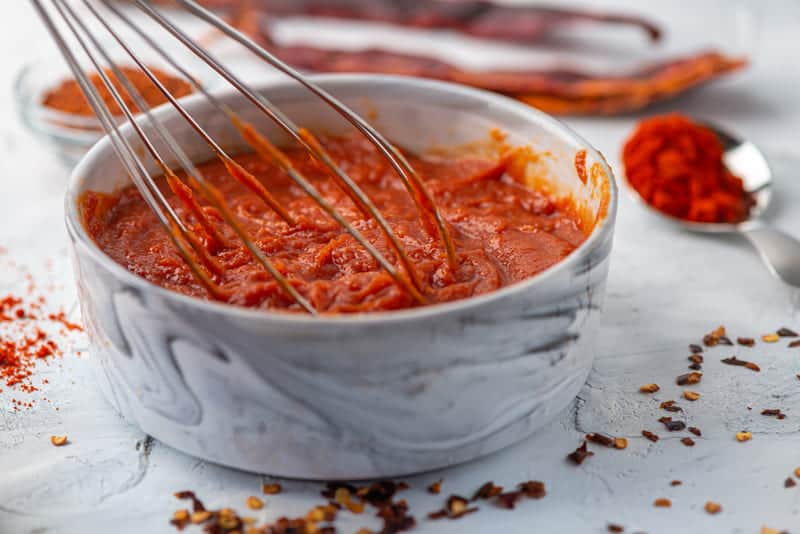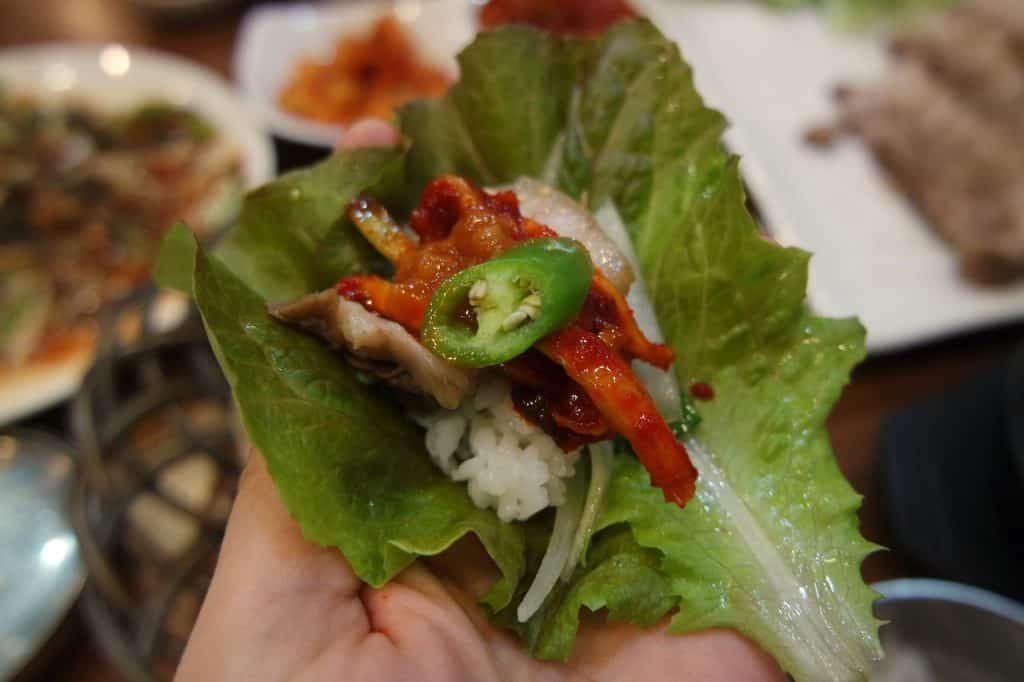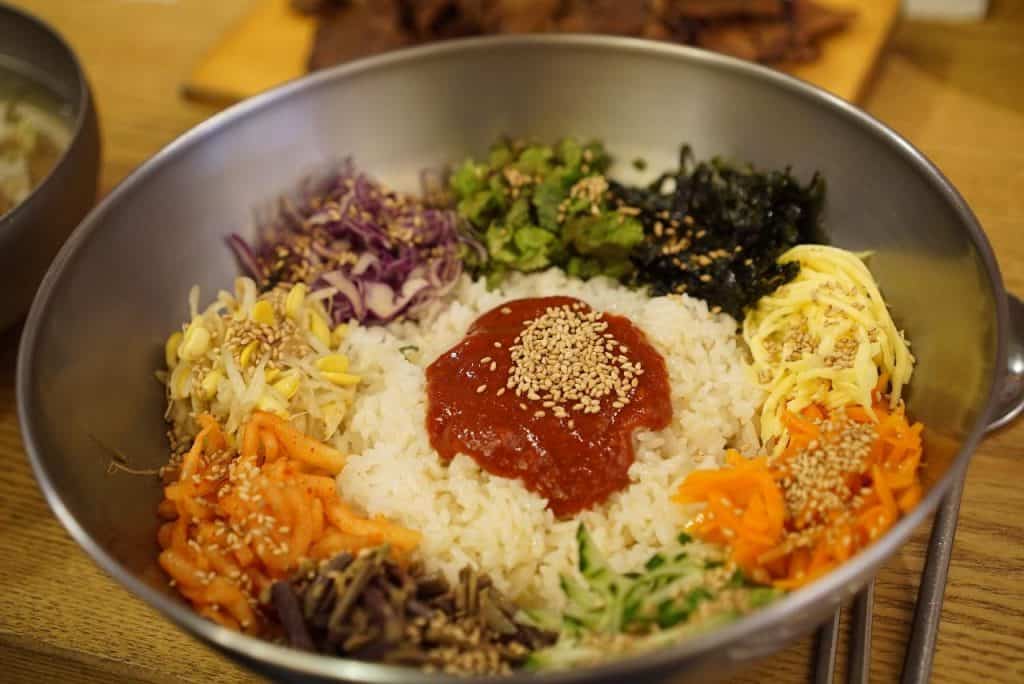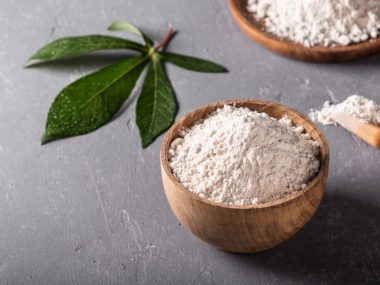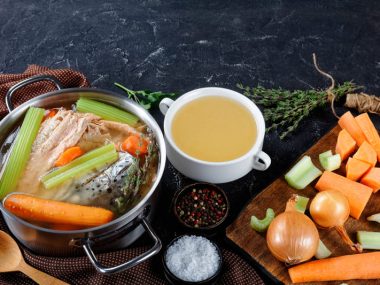If you love Korean cuisine, you probably heard of ssamjang and gochujang. However, these two dipping sauces are popular outside of Korea too as they have a tasty flavor most people enjoy.
If you didn’t hear about these two sauces before, we are here to tell you everything you need to know before giving them a try. These sauces are very similar in both taste and color but they are not quite the same.
The difference between these two sauces stays in flavor. Ssamjang has a stronger umami flavor while gochujang is sweeter and also spicier. However, even Koreans would tell you that the difference can be unnoticeable.
Ssamjang vs Gochujang
| Ssamjang | Gochujang | |
| Dishes | Barbecue, veggies, octopus, and other seafood | Soups, stews, baked dishes |
| Ingredients | Gochujang, Doenjang, garlic, sesame seeds, sesame oil | Chilli peppers, soybean paste, rice powder, salt |
| Color | Mild red | Red |
| Umami flavor | Pungent umami | Mild umami |
| Spiciness level | Mild spicy | Spicier than Ssamjang |
Can I Use Ssamjang Instead of Gochujang?
These two sauces are extremely similar so you can definitely use them interchangeably. Even in Korean cuisine, one can substitute for the other.
They have similar ingredients and Ssamjang also contains Gochujang which is a sign that they will taste fairly the same. You will need a lot of experience in Korean food to be able to tell the difference between these sauces by simply tasting them.
However, as similar as the taste of these sauces is, they are traditionally used for different dishes. Ssamjang is usually a dipping sauce for barbecue and fried octopus. Gochujang, on the other hand, is a common ingredient in stews and soups.
If you like the taste of one or both of these sauces, you can get creative and use them in whatever recipe you want. They can go great as an ingredient to salad dressings for instance.
Is Ssamjang the Same as Gochujang?
Even if Ssamjang is very similar to Gochujang, these two sauces are not identical. In order to understand why these sauces are different, we will have to define each one of them.
Ssamjang contains Gochujang, Doenjang, salt, sesame seeds, garlic, and sesame oil. This sauce has a nutty flavor as well and a strong umami taste.
The texture of this sauce is smooth and sometimes it can have chili seeds that add a bit of crunchiness. Even if there are multiple Ssamjang recipes, some containing beef, shrimp, or sugar, they all have a basic mix of Gochujang and Doenjang.
Gochujang on the other hand is a chili paste with a mild spicy taste to it and a less umami flavor. Among the ingredients of this sauce, you will find chili peppers, soybean paste, rice powder, and salt.
However, just like with Ssamjang, this sauce can be prepared in different ways. It has a smooth texture just like Ssamjang sauce with chili flakes sometimes present in the sauce.
What is Ssamjang Used for?
If you want a traditional Korean dipping sauce, Ssamjang might be just what you need. It is most commonly used as a dip for all types of barbecue meat and veggies.
A very specific combination original to Korea is a fried octopus with Ssamjang sauce. This mix is so appreciated that it has its own name: jjukumi ssamjang. Even if these are the traditional uses for Ssamjang, this doesn’t mean that you can’t use it with any other dishes if you like its flavor.
As we mentioned before, you can use Ssamjang in any dish that calls for Gochujang so the sky is the limit when it comes to the dishes you can enjoy your Ssamjang with.
What Can I Substitute Ssamjang With?
If you don’t have Ssamjang and you don’t know how to make this tasty dipping sauce yourself, you might look for replacements. Luckily, there are some options you can use successfully to still enjoy your favorite dishes.
Gochujang
We established that you can use Ssamjang with Gochujang interchangeably so this should be your first option. Many people can’t really tell the difference between these popular sauces as they are so similar. They even look the same.
However, even if you are an expert in Korean cuisine, and you can tell the difference, chances are that this difference will not bother you as your dish will still taste great. Use Gochujang in all dishes that call for Ssamjang and you might not feel a significant difference in the taste.
Doenjang
You can also use the Doenjang just as well if you don’t have Ssamjang. Doenjang will give you the smooth texture of Ssamjang even if you will not have all the other flavors.
Doenjang is very similar in taste to miso and you can always add other ingredients to give it a more pungent taste such as garlic or sesame oil.
You can use Doenjang to flavor soups or stews as well as baked dishes. It will also taste great as a topping so let your imagination run if you decide to replace Ssamjang with Doenjang.
Sambal Oelek
If you are a fan of Thai cuisine, you will be glad to find out that Sambal Oelek can replace your Ssamjang successfully in most recipes. It is a chili garlic sauce that is popular in Thailand but also in other parts of the world.
The flavor is similar to Ssamjang even if it is not as pungent and you might not find the umami taste you expect. You can use this substitute in all types of dishes from soups to stews, stir-fries, and even as a salad dressing.
Homemade Ssamjang
Making your own Ssamjang is not as difficult as it might seem. You will need Korean ingredients but if you have access to a Korean or Asian market you shouldn’t have a problem getting them.
Ingredients:
- 1/4 cup Doenjang
- 2 tablespoons of Gochujang
- 2 tablespoons of sesame oil
- 1/2 tablespoon of minced garlic
- 0.35 ounces of sliced onion
- 2 tablespoons of walnuts and 0.35 ounces of apple (optional)
Instructions:
The ingredients differ from recipe to recipe but if you want a traditional Korean Ssamjang, this is all you need. All you need to do is add the ingredients to a blender and mix. You shouldn’t have to mix them for more than one minute.
It is as easy as it sounds. Once your ingredients get a thick and creme consistency, you will be able to enjoy your Ssamjang. You might want to save some of them for topping.
So, if you want keep a few walnuts to sprinkle on top of your sauce for a better presentation. You can do the same with onion or sesame seeds according to your preferences.
Homemade Ssamjang is a great substitute for the same sauce you can find in the store. And if you save it in a sealed container, in your fridge you will be able to enjoy your homemade Ssamjang for up to five days.
However, being as tasty as it is, you will most likely finish it before this expiration date.
Conclusion
Ssamjang and Gochujang are popular in many Asian dishes. Once you discover their intense flavors, you will find them suitable in a variety of recipes so you can definitely get creative with these sauces.
However, if you are missing both of them from your kitchen, you can always replace them with one of the options in this guide.
Usually, if you have one sauce or the other you will be able to prepare any type of intense Asian dish at home. Don’t be surprised if these sauces become your favorites as soon as you give them a try!
